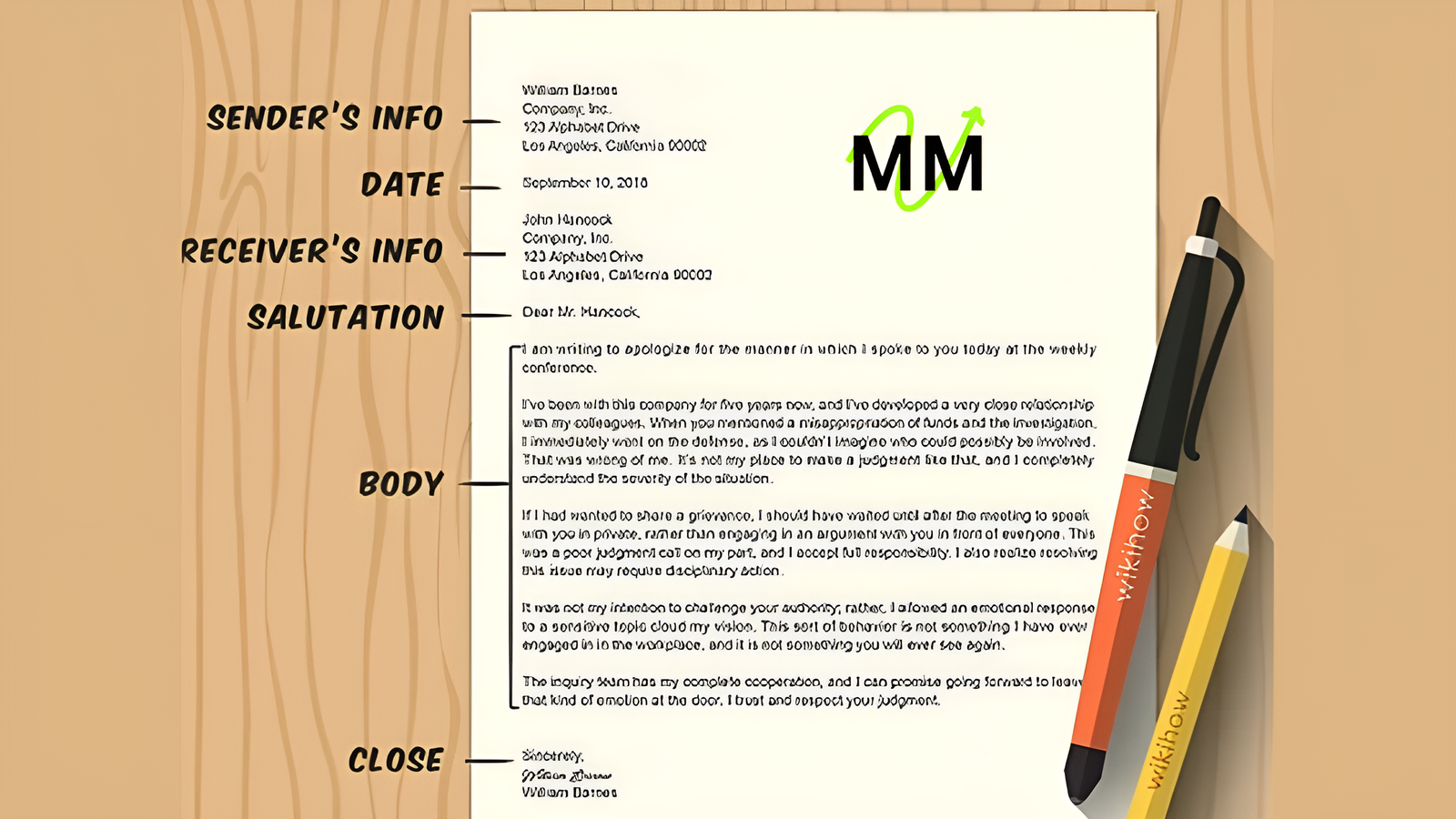How to Write Apology Emails Like the British: The Guide to English Courtesy

Apologizing is a national sport here in the UK. For everything from minor inconvenience to central oversight, the British know how to be polite and usually have some elaborative apology for anything. The beauty of the British apology lies in that sensitive balance between sincerity, politeness, and a touch of formality. Writing an effective apology email within the British context requires knowing this quirky approach named English politeness and understanding the cultural nuances that make those apologies quite effective.
This guide will help you compose an apology email based on English politeness. It will help you know what to include and avoid as a non-Brit and provide a sample email to illustrate the approach.
Understanding English Courtesy in Apology Emails
British culture is renowned for its politeness and understatements. An apology is not just a way of expressing regret; it is also a means of showing respect and keeping good relations with others. Here are several guiding principles of English politeness that you might want to use when composing an apology e-mail:
Be Polite and Sincere: An English apology is invariably couched in respectful language and sincerity. A lot of casual speech should certainly be avoided, and anything that sounds like it could be insincere.
Understate Rather than Overstate: Understatement is used instead in British culture. What one says can be too dramatic or show too much emotion when trying to make a point. One speaks calmly and measuredly.
Take the Blame: One should always admit to one’s mistake or error and be responsible when apologizing. It shows integrity and the will to make things right.
Offer Solution/Next Steps: While apologizing may be one thing, coming up with a solution or next steps allows an individual to stay ahead in rebuilding trust. The British appreciate an apology more when it can be followed through by some practical means of dealing with it.
Express Appreciation for Their Patience: Adding a note of appreciation is considered polite and soothing in case they were put out by an individual or incident. It also complements the tone of apology.
Things to Avoid in a British Apology Email as a Non-Brit
While the British apology is based on politeness, there are a few common mistakes non-Brits may wish to avoid:
Avoid Very Casual Language: Phrases like “my bad” or “oops” may give the impression of dismissiveness. Use more formal language, such as “I apologize” or “I am sorry for the inconvenience.”
Don’t Over-Apologize: One does not have to apologize a great deal or profusely. Just one sincere apology would suffice; too much apologizing makes it seem insincere and may further annoy the recipient.
Avoid Dramatic Language: British culture is extremely subdued. Phrases like “I am devastated” can almost feel a touch too much. Instead, use wording that infers regret without going to an extreme.
Avoid Blame-Shifting: While explaining circumstances surrounding a situation can be effective and even necessary, shifting blame onto others is not. A genuine British apology takes the blame and moves towards the solution rather than assigning fault.
How to Format an Apology Email in British Style
1. Start with a Formal Salutation
Start with a formal and appropriate salutation, using the person’s title and last name if you are unfamiliar with them. “Dear Mr. Smith” or “Dear Dr. Jones” does the right thing. Even a simple “Dear [First Name]” would suffice if the relationship is well informal.
2. Acknowledge the Problem and Apologize
Acknowledge the problem: it could be a missed deadline, an error, or something else that caused inconvenience. Show you are sorry by using expressions like “I apologize for” or “I’m sorry about that.”
3. Take Responsibility
Never sidestep and blame others for whatever has happened. Instead, accept total responsibility for such an oversight because it shows maturity and professionalism.
4. Explanation (If Applicable)
Describe briefly the cause of the problem, but make it brief. British readers like background information but do not want to be burdened with it.
5. Provide Solution or Next Steps
Suggest a concrete solution or what you would do to rectify the situation. This informs the recipient that you are not only saying sorry but also serious about putting things right.
6. Express Gratitude
Acknowledge the recipient for any inconvenience he may have gone through and show your appreciation for their patience or understanding. This is a little touch, but it cements the email as polite.
7. Close with a Courteous Closing
Use a polite closing, such as “Best regards” or “Sincerely,” followed by your name. This provides a respectful and professional close to your email.
Example of a British-Style Apology Email
Subject: Apology for Missed Deadline on Project Report
Dear Mr. Thomson,
I hope you are well. I would like to take this opportunity to apologize for missing the deadline for submitting the project report on 10th October. I know it was vital to submit it in time, and I regret any inconvenience that my sloppiness might have caused.
Unfortunately, due to unexpected scheduling conflicts, I could not complete the report as planned. This was my oversight, and I fully accept responsibility for not informing you of the delay in time.
I have made arrangements to catch up on the remaining tasks, and I am committed to ensuring that the completed report is delivered by Friday, October 13th. Furthermore, I will apply better project management practices to avoid such delays in the future.
Thank you for your understanding and patience in this matter. Please do not hesitate to contact me if there’s anything else I can do to follow up on the above.
Sincerely,
John Richardson
[Your Position]
[Your Contact Information]
How to Write an Effective Apology Email to the British
Be Concise and Clear: There is a likelihood that British readers despise receiving an email that drones on without going into the substance of the matter. Respect their time by not writing an overly long email but saying what needs to be told in its place.
Be Polite: There is nothing more important for the British than being polite, and “please,” “thank you,” and “I would appreciate” should be used here. Avoid abrupt language that seems too direct or impolite.
Be Professional in All Situations: Your relationship does not matter; you must always maintain a professional tone. This means that even if your relations are good, formal greetings and closings MUST be used.
Include Contact Details: Including your contact details, such as a phone number or an email, invites the person on the receiving end to call or write in case further discussion about the matter at hand is required or even wanted. It is a minor courtesy that you are open to communicating with them so that everything falls into place.
Mistakes Non-Brits Should Avoid
Foreigners not used to the nuances of British politeness may fall into a few traps when writing an apology email. Following is what you need to avoid doing:
Apologizing Overmuch: The Brits do tend to apologize very much. Yet, there is almost a thin line between them. One well-pronounced apology will carry more weight than many, which eventually becomes overused.
Tone at Work: Avoid using slang, abbreviations, or casual phrases that would instead dilute the severity of your apology. Significantly, the UK emphasizes a formal tone in work emails.
Apologizing but Not Offering a Resolution: Many consider an apology without offering a resolution incomplete. Give your resolution loud and clear to assure your willingness to make things right and to take action to correct the problem.
Not Explaining: This does not mean you cannot explain why this situation arose, but you should also avoid going on ad nauseum with too much detail. The British want to hear a straightforward,’ ‘I am sorry,’ assume responsibility, and offer a resolution.
Read More
Closing Remarks: How to Write an Apology Email w/ British Courtesy
How to write an apology email? Writing an apology email that resonates with British readers is a question of striking a delicate balance. The focus needs to be on an unequivocal and sincere apology, bringing with it the ability to take responsibility while keeping at arm’s length from excessively emotive language. An effective British-style apology email will be concise, polite, and solution-oriented, thus truly showing your intent toward atonement. Keeping all these strands together ensures you construct a virtually perfect email representative of English politeness that leaves a positive impression, even on sensitive issues.
Follow this guide, and you should walk away feeling confident in writing an apology email that respects British cultural norms yet reflects well on you and your professionalism.






